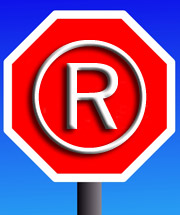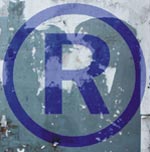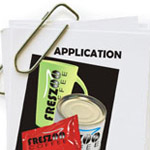Trademark Infringement
In law, a trademark is a form of property and trademark infringement
and it is a violation of your proprietary rights.
It is easier to prevent unauthorized use of a registered trademark, than to prove ownership of a mark purely based on use (common law).

Whilst it is common to prevent use in related or similar fields, if the mark is strong enough, it may be possible to prevent its use in all fields.
For example, a unique trademark such as KODAK® will have protection not only in the photographic field, but also in relation to cars, computers, make-up etc.
It therefore follows that choosing and registering a strong trademark will offer the best protection against trademark infringement.
What Constitutes Trademark Infringement
TM infringement can happen in many ways:
- There may be blatant infringement - where someone else labels their goods or services in the same manner as yours, such as with counterfeit goods.
- Someone may use a spelling variation of your mark for example ROLLS ROYCE® vs ROLLZ ROYCE in order to create confusion.
- Dilution - Where someone uses your mark which does not necessarily create confusion. The mark is used in order to trade on its reputation and thereby detracts from the original trademark. For example, where ROLLS ROYCE ® became synonymous with quality, someone may want to call their product ROLLS ROYCE AWNINGS.
- Someone may - inadvertently or without ill intent - use you mark in such a way that there is a danger of it becoming generic. For example: "Experts in hoovering carpets" as opposed to "Experts in vacuuming carpets, using only the best HOOVER vacuum cleaners".
- Where a third party may have registered a domain name without having done a trademark search or with intent to take advantage of your trademark.
How to Trace Trademark Infringement
It is up to the trademark owner to be aware of infringement. Your country's Trademark Office may reject outright the application for a similar mark.
However, the owner of a trademark should regularly scan published Trade Mark Journals or Gazettes and oppose applications that may infringe upon their marks.
Not only do you need to consider the Journal of your country, but also publications for applications under the Madrid Protocol or an European Community trademark application - OHIM.
Please Note:
Links to many other Trademark resources can be found on our
Intellectual Property page.
Although you may not want to register your trademark in other countries through these organizations, you may want to prevent someone else from using this route to register a similar mark, which may then be valid in your country.
How to Stop TM Infringement

Once you've become aware of someone else using your mark, you must take prompt action. Notify them of your rights and demand that they stop (cease and desist) using your mark.
Left unattended, they may acquire rights based on use and your right to object could become waived.
If the infringement continues, you have to take legal action. The various Trademark Offices do not enforce trademark rights, but you could file complaints with your High Court, or if applicable, a consumer protection agency.
Trademark law firms are best equipped to assist with the management of your trademarks. They have systems in place to not only conduct searches, but also to monitor trademark infringement, competitor activity and to advise on trademark litigation in case of infringement.
You are here:







